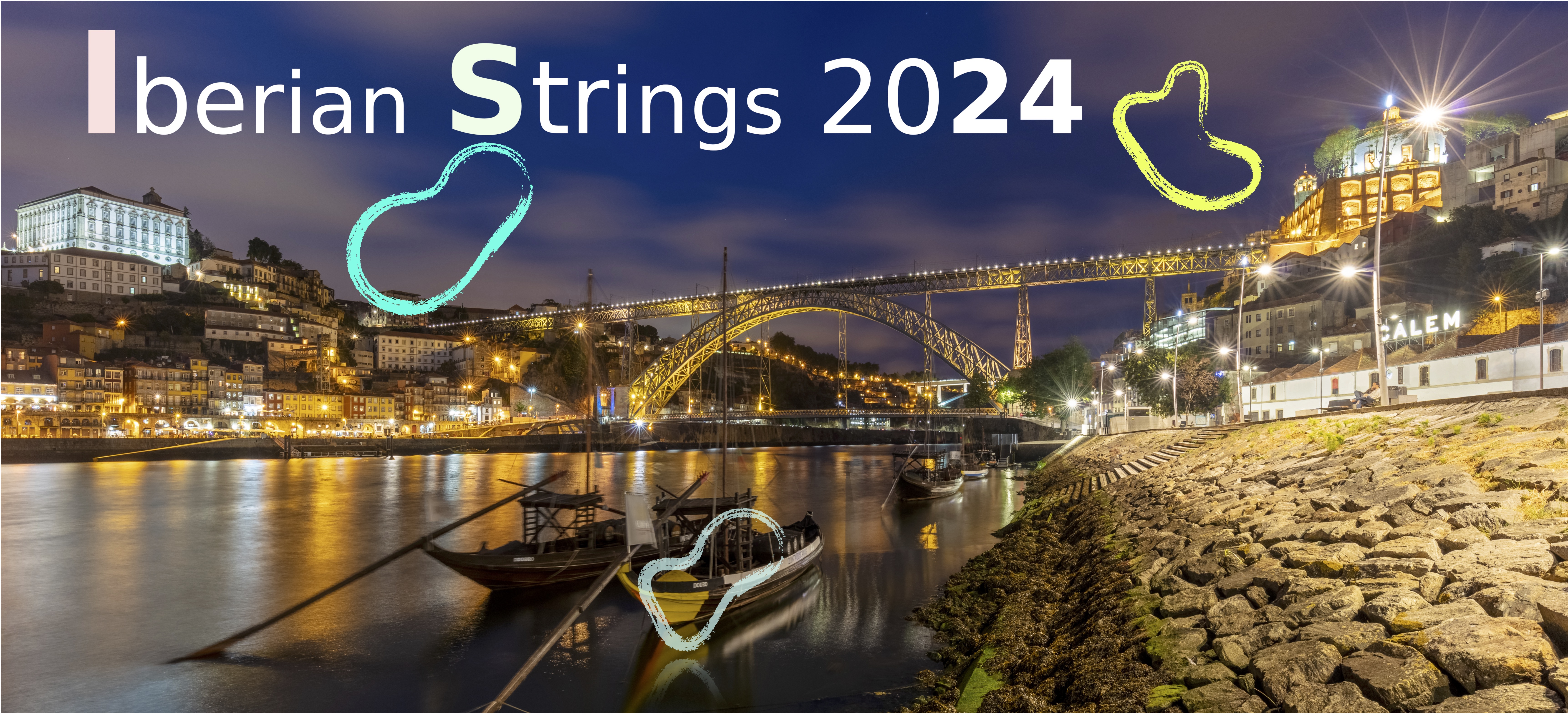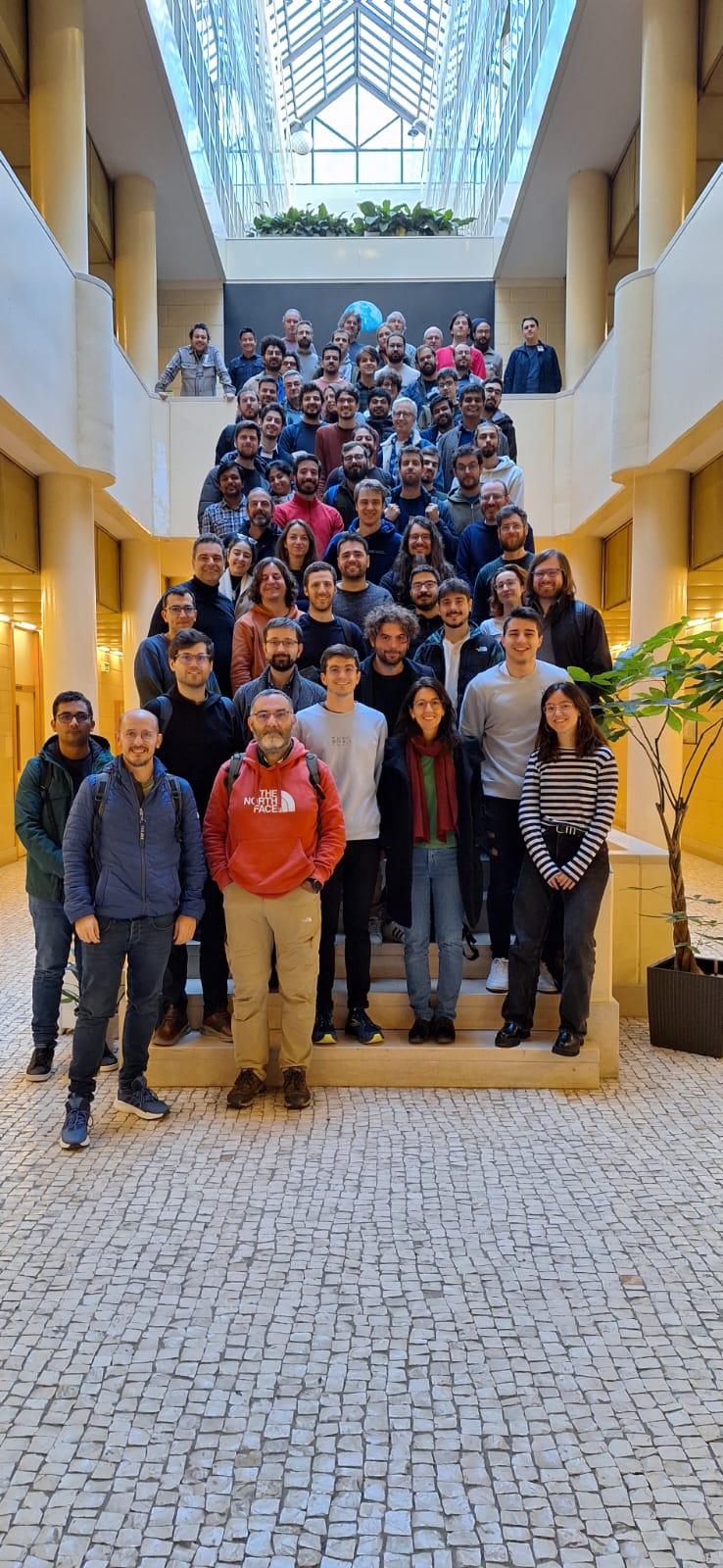- Compact style
- Indico style
- Indico style - inline minutes
- Indico style - numbered
- Indico style - numbered + minutes
- Indico Weeks View
Iberian Strings 2024
→
Europe/Lisbon
Porto - Portugal
Porto - Portugal
Faculdade de Ciências da Universidade do Porto
Rua do Campo Alegre Porto - Porto - Portugal
Description

Iberian Strings 2024 is the 16th-installment of the annual meeting of the Spanish and Portuguese String Theory community, where recent developments in the field of supergravity, strings, branes and gauge theory are discussed.
This three day meeting will have 6 one-hour invited talks, as well as contributed talks, centered around the latest developments in String Theory, the AdS/CFT correspondence, Quantum Gravity and Quantum Field Theories as well as the profound relations among them.
The conference will be held on-site at Porto University. The registration is now closed. There is a conference meal fee of 120 euros to cover the conference meals, including lunches and the conference dinner.
The fee needs to be paid to the following bank account:
IBAN: PT50 0035 0206 00002188430 04
BIC SWIFT: CGDIPTPL
Name : UNIVERSIDADE PORTO
Please send the proof of the transfer to the following email, until November 30th:
iberianstrings24@fc.up.pt
Be careful with phishing scams. You will only be contacted via the email of the organization. (iberianstrings24@fc.up.pt)
Invited Speakers
- Eberhardt, Lorenz (University of Amsterdam)
- Grassi, Alba (Geneva University)
- Belin, Alex (Milan Bicocca U)
- Parra-Martinez, Julio (British Columbia U.)
- Kiritsis, Elias (APC, Paris and U. of Crete)
- Turiaci, Gustavo (University of Washington)
Outreach Seminar
Jose Edelstein (Universidade Santiago Compostela)
Scientific Committee
- Bandos, Igor (EHU/UPV)
- Costa, Miguel (Universidade do Porto)
- Edelstein, José (Universidade Santiago Compostela)
- Emparan, Roberto (ICREA/Universitat de Barcelona)
- Fernandez-Melgarejo, Jose (Universidad de Murcia)
- Hernández, Rafael (Universidad Complutense Madrid)
- Janssen, Bert (Universidad de Granada)
- Lledó, María A. (IFIC-CSIC/Universitat de Valencia)
- Lopes-Cardoso, Gabriel (Universidade Tecnica Lisboa)
- Lozano, Yolanda (ICTEA/Universidad de Oviedo)
- Marchesano, Fernando (IFT-CSIC/UAM)
- Mas, Javier (Universidade Santiago Compostela)
- Mateos, David (ICREA/Universitat de Barcelona)
- Molina, Javier (U. Cartagena Politecnica)
- Ortín, Tomás (IFT-CSIC/UAM)
- Vázquez-Mozo, Miguel Ángel (Universidad de Salamanca)
Local organizers
- Antunes, António
- Costa, Miguel
- Gonçalves, Vasco
Group photo

Participants
Adolfo Guarino
Alejandro Vilar López
Alessandro Georgoudis
Alessio Caddeo
Alex Belin
Alfonso Ramallo
Ana Climent
Andrea Guerrieri
Antonio Leite Antunes
Aranya Bhattacharya
Ayan Kumar Patra
Bruno Bento
Camilo las Heras
Carlos Bercini
Carlos Bruno Dias Fernandes
Carlos Hoyos
Carmen Gómez-Fayrén de las Heras
Daniel Grumiller
David Travieso Mayo
Eduardo Garcia-Valdecasas Tenreiro
Evangelos Afxonidis
Fernando Marchesano
Filipe Serrano
Georgios Itsios
Giacomo Giorgi
Guillermo Arias-Tamargo
Igor Bandos
Jackson Fliss
Javier Mas Solé
Javier Matulich
Jose Edelstein
José David Tempo Rangel
José Guilherme Boura de Matos
João Vilas Boas
Juan Miguel Nieto García
Juan Santos suárez
Konstantinos Rigatos
Marija Tomasevic
Marina David
Martí Berenguer Mimó
Matilda Delgado
Matteo Morittu
Matteo Zatti
Michelangelo Tartaglia
Miguel Costa
Miguel García Fernández
Miguel Montero Muñoz
Miguel Zilhão
Mikel Álvarez Urquiola
Niall Macpherson
Pablo A. Cano
Pablo Bueno
Pietro Benetti Genolini
Quim Llorens Giralt
Rafael Carrasco Carmona
Ricardo Rodrigues
Riccardo Borsato
Rishi Mouland
Roberto Emparan
Rodriguez-Gomez Diego
Romina Ballesteros
Tomás Ortín
Unai Sárraga
Vasco Goncalves
Yolanda Lozano
- +11
Contact



